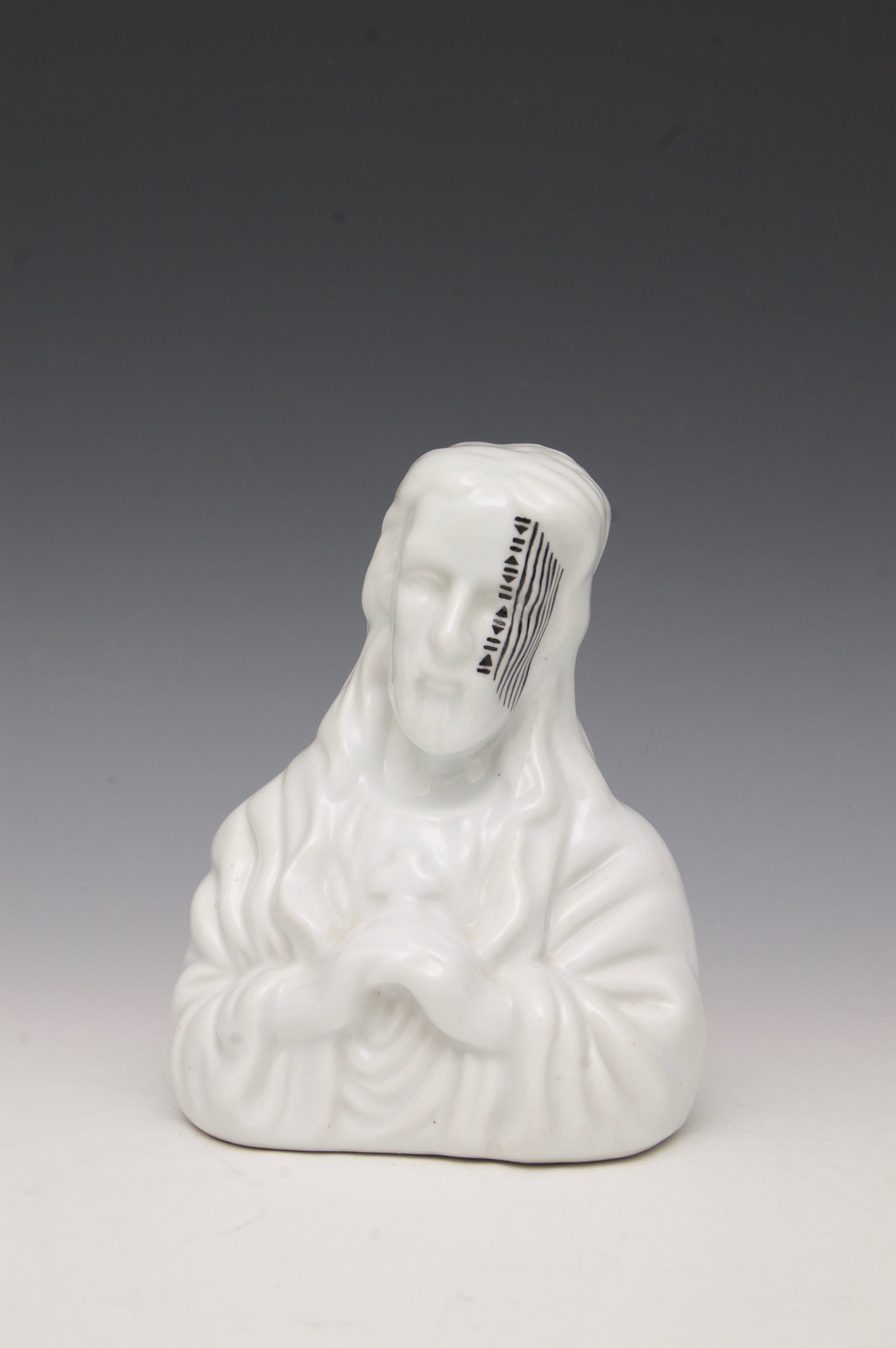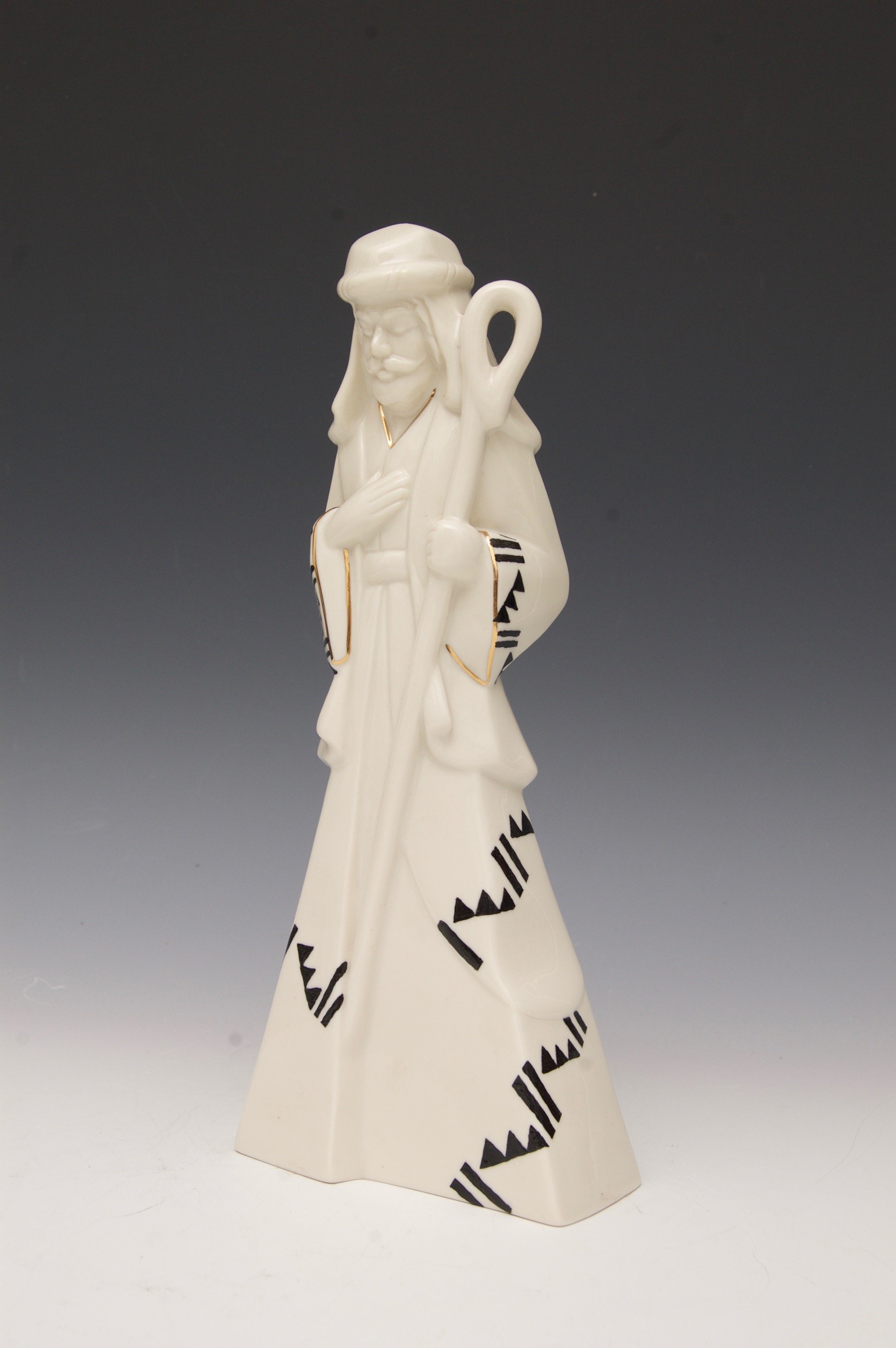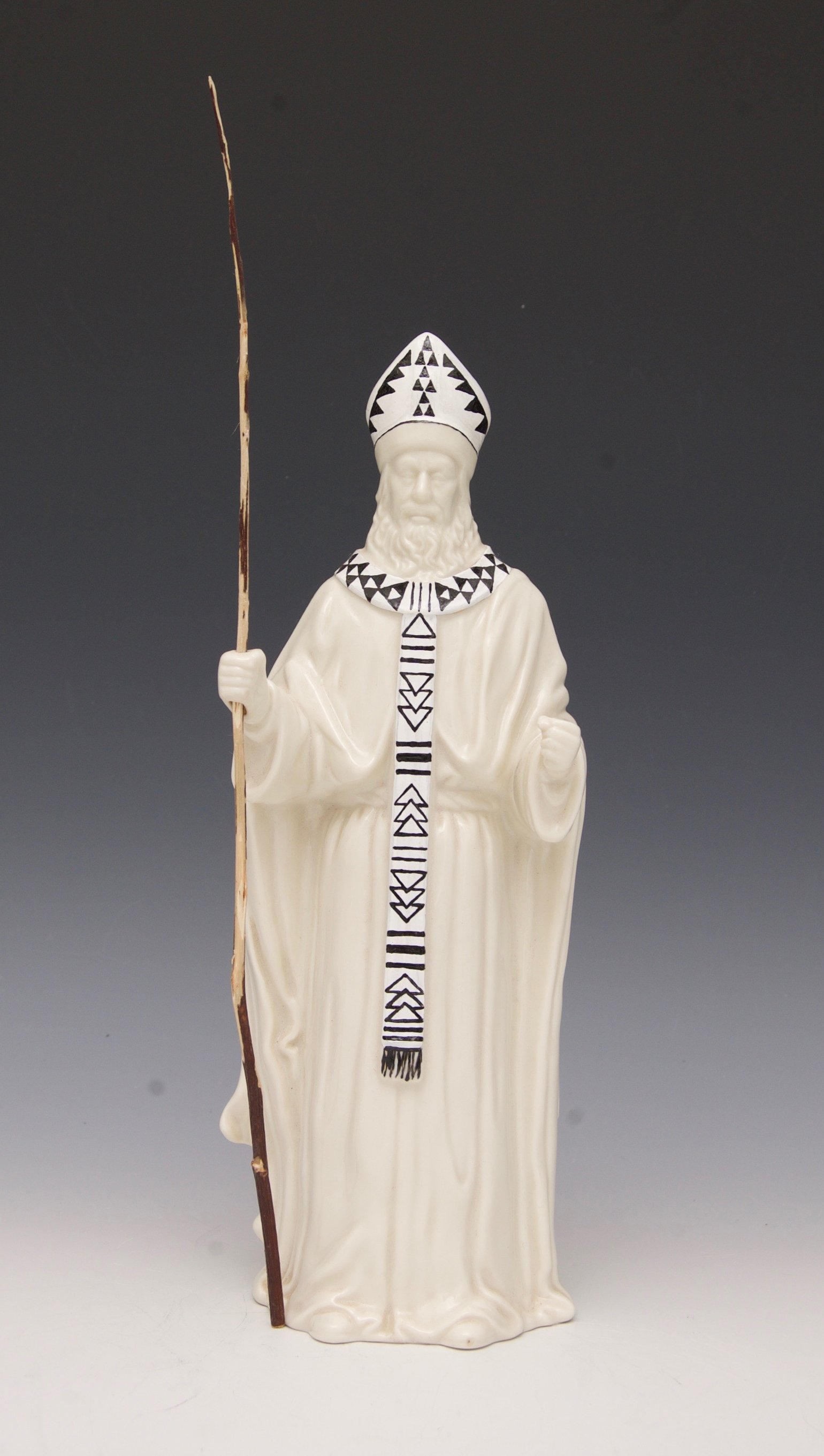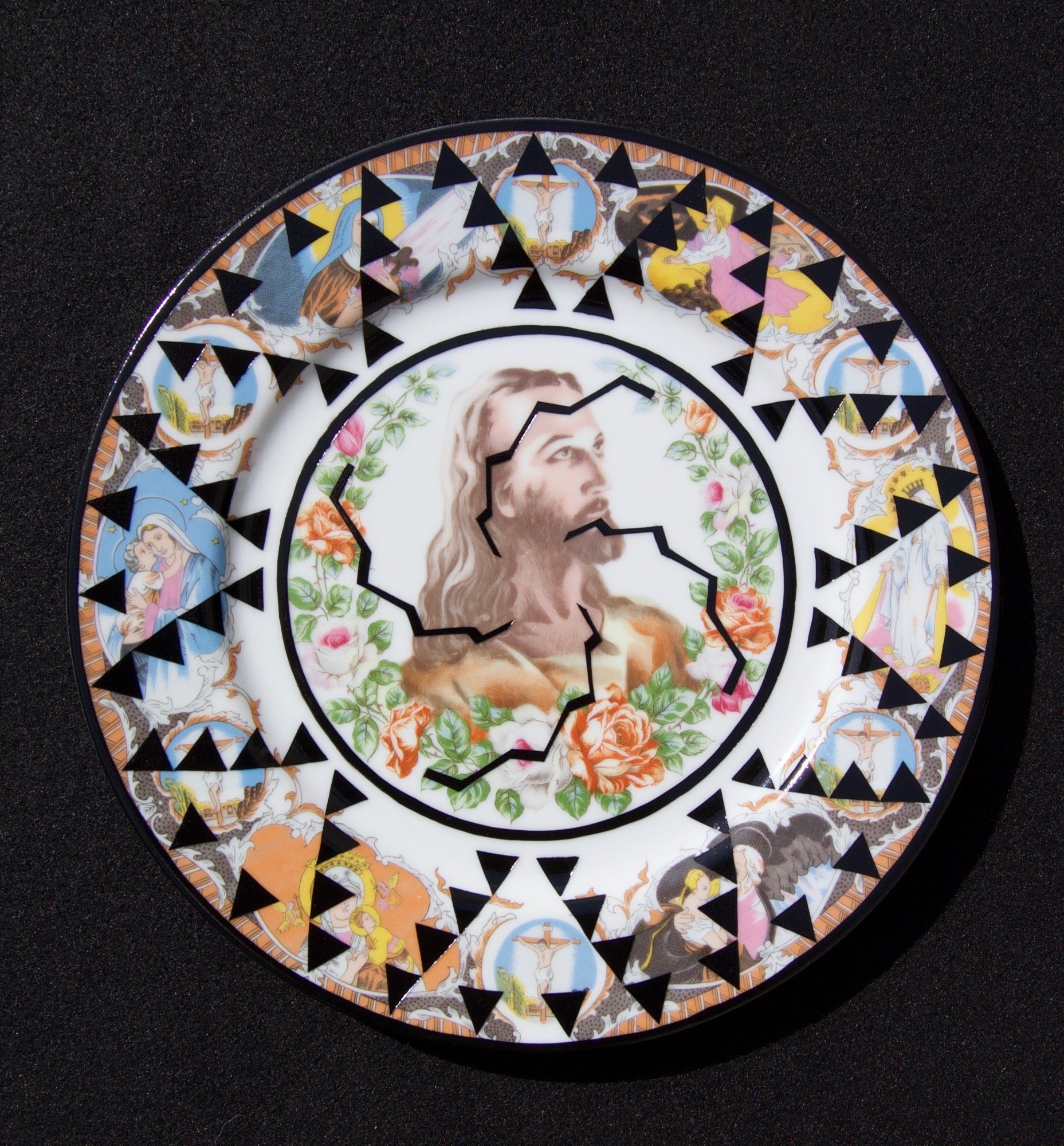And It’s Built on the Sacred
Jacob A. Meders
Building on, replacing and destroying what is sacred has been the gentrification of Indigenous land. To know what is sacred and to understand what is sacred would be to respect and honor what is sacred. Clearing the land with appropriation and commodification is the crafted tools of cultural dismissal and destruction.
And It’s Built on the Sacred is a reflection into the handling of unwanted Euro-American religious items. It is an open dialog into the discarded symbols of Euro-American Holy beliefs. Can what is considered Holy also be considered Sacred? The items are found objects that have run their cycle with the past proprietor. They are now vehicles that have the markings of the Indigenous people. They are now a part of the discussion of what is Sacred, the loss of what is Sacred, and how can the Sacred be so easily expendable. There is a long history of Western European civilizations taking the sacred sites of Indigenous peoples and building their religious structures on them. Many temples, missions and churches were constructed on sacred sites during the expansion of Western colonialism. In 1978 the American Religious Freedom Act was passed to no longer punish the Indigenous People of the United States for practicing their traditional religion or cultural practices. This has been in my lifetime, and the suppression has had a long lasting affect on our people. Many Indigenous People used the Christian religion to mask or hide their traditional ways of believing. This work further examines the commodification and commercialism of Christianity as well as the wake of destruction and wasted byproduct.
Scottsdale Museum of Contemporary Art, Scottsdale AZ, 2021
Curated by : Julie Ganas








